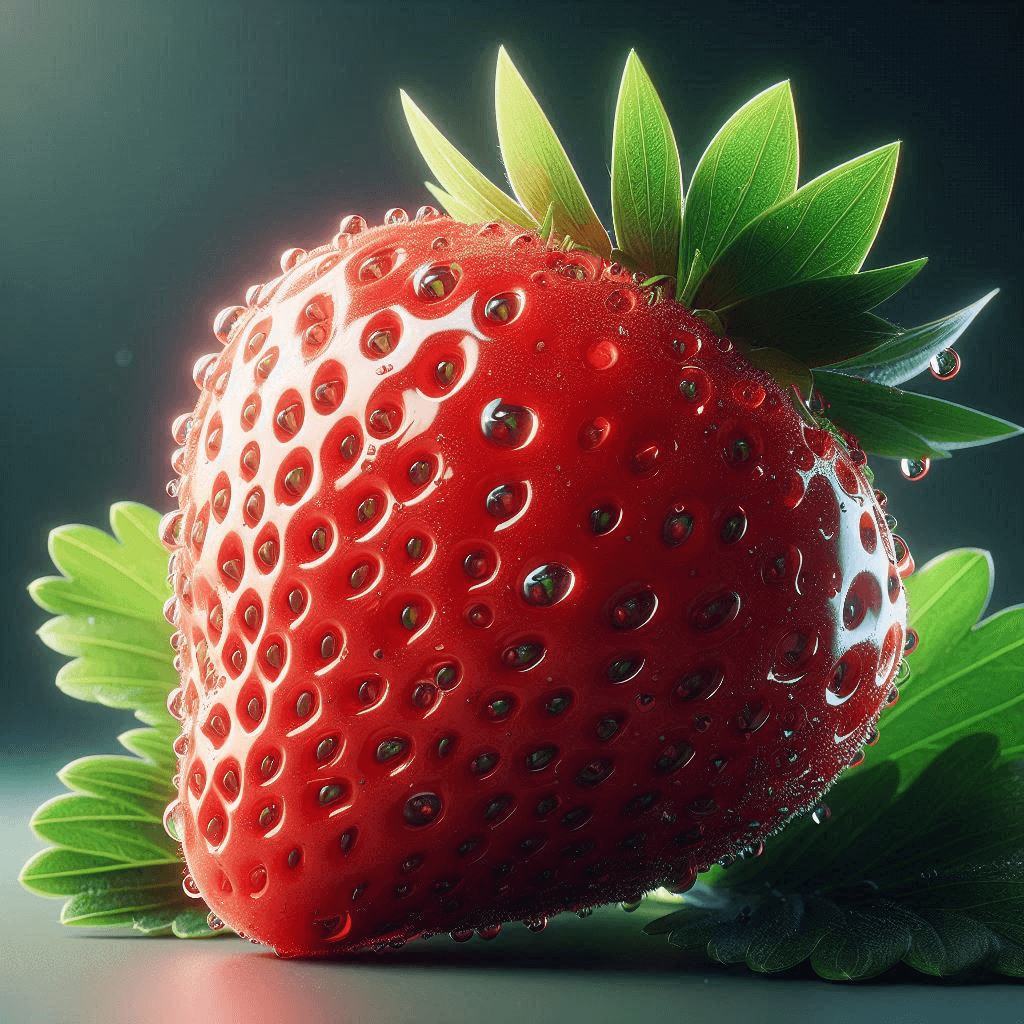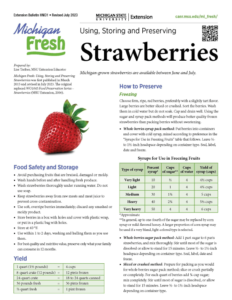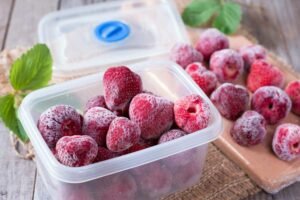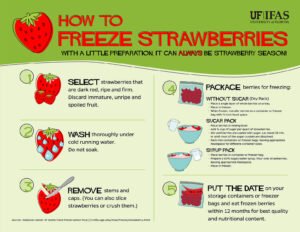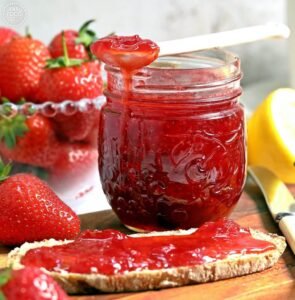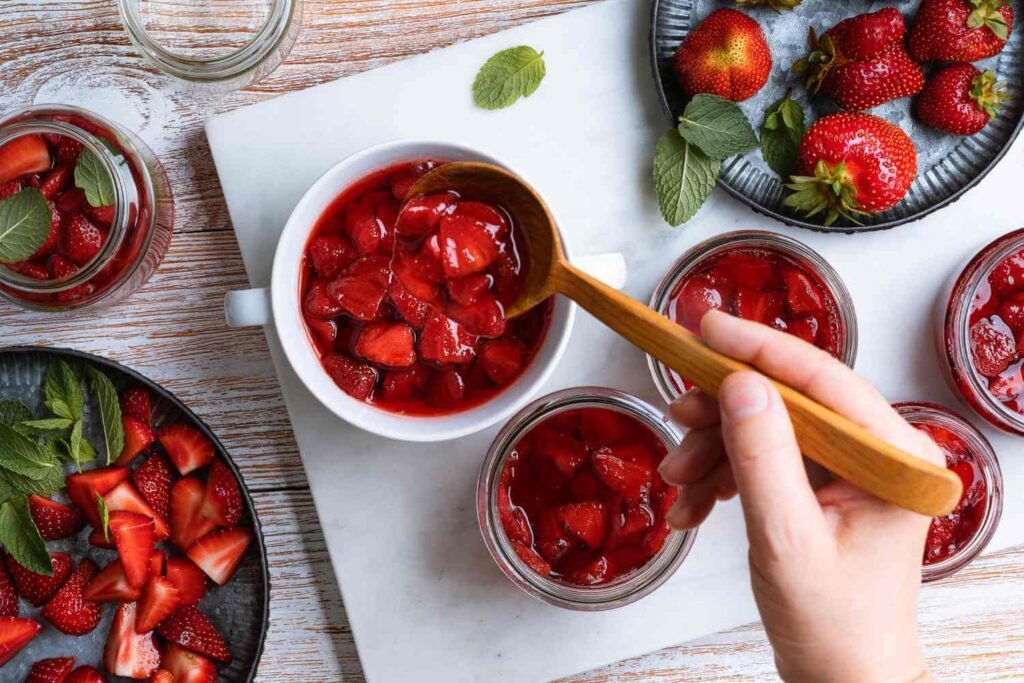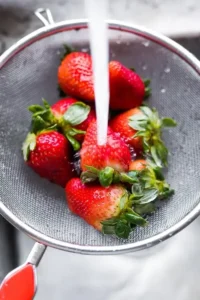Preserving strawberries is crucial for any prepper wanting to make the most of this nutritious, tasty fruit. Strawberries are powerhouses of vitamin C, folate, and potassium, but they can spoil quickly if not stored properly. To maximise their shelf life, you need to know the best methods for storing, freezing, and drying them. Not only does this ensure you have a steady supply of this delicious berry, but it also helps retain their nutritional benefits. In this guide, we’ll explore the top techniques for storing and preserving strawberries, making sure you always have access to fresh and flavourful berries.
For more detailed insights, check out these resources on how to store and preserve strawberries and Food Network’s guide.
Post Contents
ToggleHarvesting and Selecting Fresh Strawberries
Picking and selecting strawberries, whether from your garden or the grocery store, is the first crucial step in preserving their freshness and taste. The quality of strawberries you start with will directly impact how well they store and how long they last.
Picking the Perfect Berry
When harvesting strawberries at home, timing is everything. Strawberries are best picked when they are at the peak of ripeness to ensure maximum sweetness and a longer shelf life.
- Colour: Look for strawberries that are fully red. Avoid any with green or white patches, as these are not fully ripe. Overripe strawberries, often indicated by a deep red and dull appearance, should also be avoided as they can spoil quickly.
- Texture: The ideal strawberry should be firm but not too hard. Soft strawberries are often overripe and less sturdy for storing.
- Stem: When picking, gently snap the stem to avoid bruising the fruit. This is important to keep it intact and free from damage.
Harvesting at the right time and choosing the best berries can make a big difference. Remember, strawberries do not ripen after they are picked, so getting it right at the garden ensures your effort pays off.
Selecting Strawberries at the Store
When you can’t harvest your own, selecting strawberries at the store requires a few tricks to ensure you get the best quality.
- Appearance: Choose strawberries that have a bright, glossy appearance. Dull or shrivelled strawberries usually indicate a lack of freshness.
- Aroma: Fresh strawberries have a sweet, pleasant aroma. If they don’t smell like much, they might not taste like much either.
- Packaging: Check the container for signs of mould or mushy berries, as these can quickly spread to the rest of the batch.
Always keep in mind that strawberries picked at their peak offer better flavour and texture. Once you’ve selected your strawberries, proper storing methods can keep them fresh longer.
By focusing on these simple tips, you can enjoy the most delicious strawberries with a longer shelf life, making your efforts in preserving them all the more fruitful.
How to Store and Preserve Strawberries
Strawberries are a delightful and versatile fruit, but they can spoil quickly if not stored correctly. Learning how to store and preserve strawberries can help you enjoy these juicy berries for much longer, whether you’re using them for smoothies, desserts, or simply as a fresh snack.
Refrigeration Techniques
Proper refrigeration is key to keeping strawberries fresh. Here are some best practices:
- Optimal Temperature: Store strawberries at 32°F to 36°F (0°C to 2°C). This temperature range is crucial to maintaining their freshness.
- Humidity Control: Aim for a humidity level of 90-95%. High humidity helps prevent water loss and shrivelling.
- Storage Containers: Keep berries in their original clamshell or a breathable container. You can also use a partially opened plastic bag to allow air circulation.
- Avoid Washing Before Storing: Only wash strawberries right before you eat them. Washing adds moisture, which can quicken spoilage.
Refrigerating strawberries the right way extends their shelf life, letting you savour their deliciousness for up to a week.
Freezing Strawberries
Freezing strawberries is an excellent option for long-term storage. Follow these steps for the best results:
- Select Firm, Ripe Berries: Choose berries that are fully red and free of blemishes.
- Wash and Dry: Gently rinse strawberries under cool running water and pat them dry with a paper towel.
- Remove Stems: Hull the strawberries by removing the green caps.
- Freeze Individually: Arrange the strawberries in a single layer on a baking sheet. This prevents them from sticking together.
- Transfer to a Freezer Bag: Once frozen solid, transfer the berries into a freezer bag or airtight container.
Following this method ensures that your strawberries stay separate, making them easier to use later in recipes or smoothies.
For more detailed guidance on freezing strawberries, you can check Food Network’s guide.
Making Strawberry Preserves and Jams
Turning strawberries into preserves or jams is a classic method of extending their usability. Here’s how you can do it:
Ingredients:
- 4 cups of strawberries, hulled
- 4 cups of sugar
- 1/4 cup of lemon juice
Steps:
- Prepare the Strawberries: Crush the strawberries with a potato masher or in a food processor.
- Combine Ingredients: Mix the crushed strawberries, sugar, and lemon juice in a large pot.
- Cook: Bring the mixture to a boil, then reduce the heat and let it simmer. Continue cooking until the mixture reaches a gel-like consistency.
- Test the Consistency: Use a spoon to drop a bit of the mixture onto a plate from the freezer. If it wrinkles when you push it, your jam is ready.
- Jar and Store: Pour the hot preserves into sterilised jars, leaving some space at the top. Seal the jars and let them cool. Store in a cool, dark place.
Homemade strawberry preserves and jams can be stored for months and make for excellent gifts or a tasty spread any time of the year.
For in-depth instructions, refer to UC Davis’s guide on safe methods for storing strawberries.
By following these methods, you can make the most of your strawberries and enjoy their sweet flavour long after the initial harvest.
Safety Tips for Handling Strawberries
When handling strawberries, it’s essential to use proper techniques to ensure food safety. Whether you’ve picked them from your garden, bought them from a local market, or grabbed a pack from the grocery store, handling strawberries the right way will help you enjoy their sweetness while avoiding any health issues. Let’s look at effective ways to handle, wash, and prepare strawberries.
Washing and Preparing Strawberries
Washing strawberries correctly is crucial to remove soil, bacteria, and potential contaminants. Here are steps to follow:
Wait to Wash: Only wash strawberries just before you’re ready to eat or use them. Washing too early can cause them to spoil faster.
Rinse Under Running Water: Place the strawberries in a clean colander. Rinse them under a gentle stream of cool running water. This method washes away dirt and microbes more effectively than soaking.
Avoid Soaking: Do not wash strawberries in a sink or bowl filled with water. Soaking them can spread contamination from one berry to another.
No Soaps or Detergents: It’s important not to use soaps or detergents. Strawberries can absorb these substances, making them unsafe to eat.
Dry Thoroughly: After washing, softly pat the strawberries dry with a clean paper towel. Ensuring they are dry can help prevent mould and prolong freshness.
Remove Caps After Washing: If you need to hull the strawberries (remove the green caps), do this after washing. Removing caps before washing can let water in, which can lead to a loss of flavour and nutrients.
By following these steps, you can help keep your strawberries clean and safe to eat. For more detailed guidelines on food safety and safe handling practices, you can visit the FDA’s guide on selecting and serving produce safely.
Keep an eye out for more safety tips as we continue exploring how to store and preserve strawberries effectively.
If you would also like to know how to preserve Garlic click Here
Conclusion
Storing and preserving strawberries is easier than you think. By storing in cool, humid conditions, they can last up to a week. Freeze them for longer preservation. Ensure they’re washed just before use to prevent spoilage.
Understanding how to store and preserve strawberries means you’re always ready. Whether freezing, drying or making jams ensures you enjoy strawberries all year long. Try these methods and keep your supply fresh and tasty.
Check Out Our Canning and Preserving Kit Below

